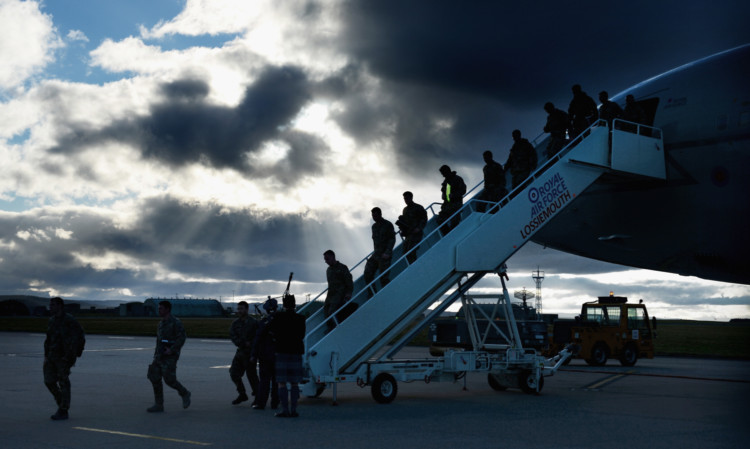The dambusters squadron has made an emotional return to the UK as it completed its final mission as a Tornado unit.
Created during the Second World War, 617 Squadron carried out the “bouncing bomb” raid to destroy dams in Nazi Germany.
The unit is being disbanded on April 1 as part of the planned draw down of the Tornado GR4 force, but it will reform in 2016, taking delivery of the Lightning II fighter.
The squadron, based at RAF Lossiemouth, left for Afghanistan in October on its final deployment to provide aerial reconnaissance for Afghan-led ground forces.
More than 100 returning airmen from 617 Squadron lined up outside a hangar at Lossiemouth yesterday and the theme music from the 1955 Dam Busters film was played as they saluted senior officers, before running into the hangar to be reunited with family and friends.
Gallery: Dambusters return from final mission
Flt Lt Andy Power was greeted with a kiss from his three-year-old son Harry, who had 617 and a lightning rod painted on his face.
He was delighted to see his family but said the day had added significance as the squadron prepares to disband.
“I asked to be on 617 because I knew the heritage of the squadron and it’s an honour to have been part of it,” he said.
“It’s a poignant day returning from tour with the disbandment coming up but it’s reforming in a couple of years and 617 will remain at the forefront in a new chapter of RAF history with the Lightnings.”
The squadron has twice been disbanded and reformed as it has moved from operating Lancasters to Vulcans to Tornadoes, in a process that is usual for all RAF squadrons.
There are about 175 personnel in 617, all of whom will transfer to other Tornado squadrons, retrain on the Typhoon, or move to another part of the organisation.
When it reforms, it will be stationed at RAF Marham in Norfolk and have RAF and navy personnel. Wing Commander David Arthurton, from Harrogate, was in charge of 617 during the tour of Afghanistan.
He is sad to see the unit disband and move away from the north-east of Scotland.
“I’ve been very proud to be the commanding officer,” he said.
“For the majority of the deployment, we just got on with business but, with the final flight approaching, everyone was aware it was a special moment.
“Returning home from tour is always a special day but today is even more so. Lossiemouth, 617 and the Tornados are all special to us so it is an emotional time.”
It is arguably the most famous squadron in the RAF, created in 1943 to carry out attacks with a level of accuracy then unprecedented.
